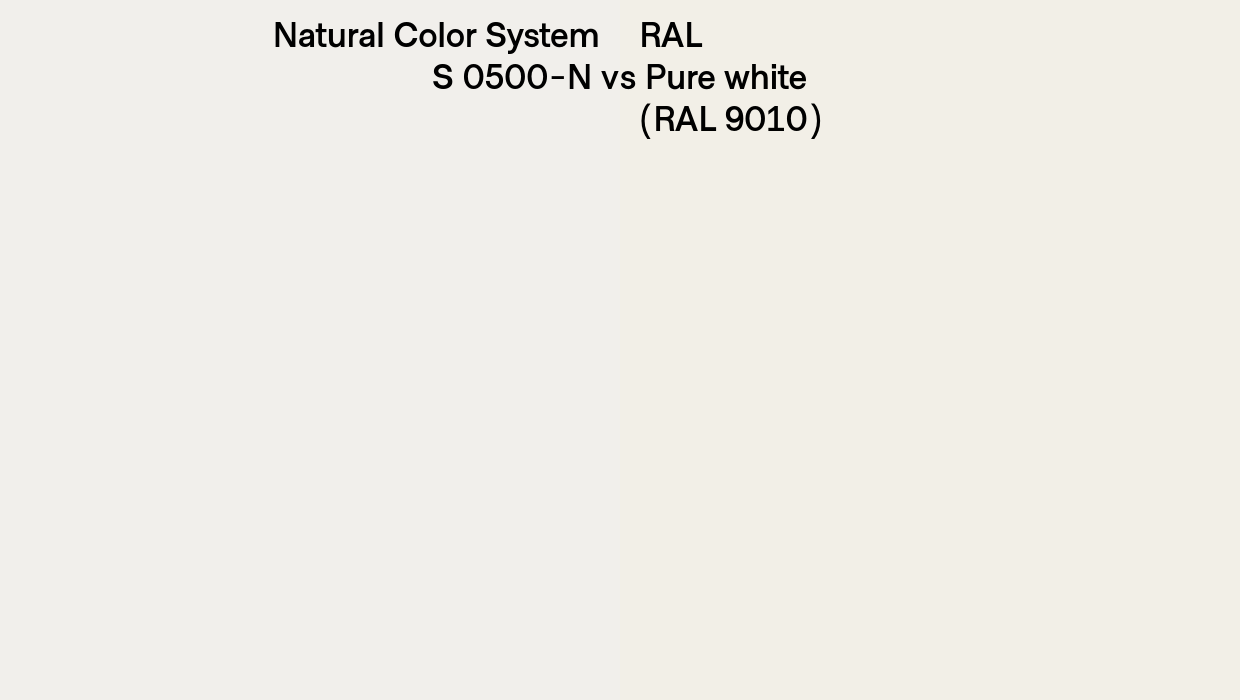Choosing the perfect shade of white paint may seem like a simple task, but it's actually more complex than it appears. There are many factors to consider, including the light conditions in the room, the atmosphere you're trying to create, and the other colors you want to combine with the white. In this blog post, we'll explore some of the different shades of white and their uses.
Warm and Cool Whites
White paint is rarely a pure chalky white because it would be too bright and glaring. Instead, it often contains a touch of black to balance our perception of the painted area, as well as a pigment to add warmth or coolness. A white with a cool pigment works best when paired with other cool tones, such as blue, turquoise, and violet, or with cold metals such as silver and zinc. On the other hand, a warm pigment will complement warm colors like red, orange, and yellow, as well as warm metals like gold and brass.
Neutral White-NCS Color Code S 0500-N
One popular shade of white is neutral white, also known as NCS Color Code S 0500-N. This shade contains 5% black and is perceived as a neutral white. It does not contain the yellow pigment that has been standard in white paint and white-varnished furniture for many years.
Window White -RAL 9010
Window frames and metal windows often use the white color RAL 9010, which has a slightly yellowish-white tone. Experts argue whether NCS Color Code S 0502-Y is the wall color that comes closest to RAL 9010, but some people claim it is a little whiter than Stockholm white.
Stockholm White- NCS Color Code S 0502-Y
https://hextoral.com/side-by-side/s-0300-n-vs-s-0502-y/
Stockholm White is named after the light, fresh style that was dominant in inner-city Stockholm during the first decade of the 21st century. It has a touch of yellow pigment, which some critics thought would make it look nicotine-stained, but fans of the color code believe that the warmth in this shade of white is its strong point.
Ceiling White- NCS Color Code S 0300-N
White paint for the ceiling is usually a whiter shade than that used on the walls. The usual color code for the ceiling is NCS Color Code S 0300-N, which has only 3% black in it. The principle behind this is that the ceiling should be lighter than the walls to "lift" the room. Ceiling paint is usually flat matte (GL3) on the gloss scale.
Standard White for Moldings and Woodwork
Factory-painted moldings, door frames, and internal doors are usually varnished in NCS Color Code S 0502-Y, also known as standard white. This shade has a touch of warmth, which can cause problems for people who want a chalk-white or cold gray wall in their homes. If you paint chalk white alongside these standard varnished architraves, they can bring out the worst in each other, with the architraves looking yellow and the walls appearing bluish-white.
Choosing the right shade of white is important to achieve the desired atmosphere and complement other colors in a room. It's important to consider the undertones of different shades of white and how they'll interact with other colors and elements in the room. Taking the time to choose the right shade of white can make a significant difference in the overall look and feel of a space.


